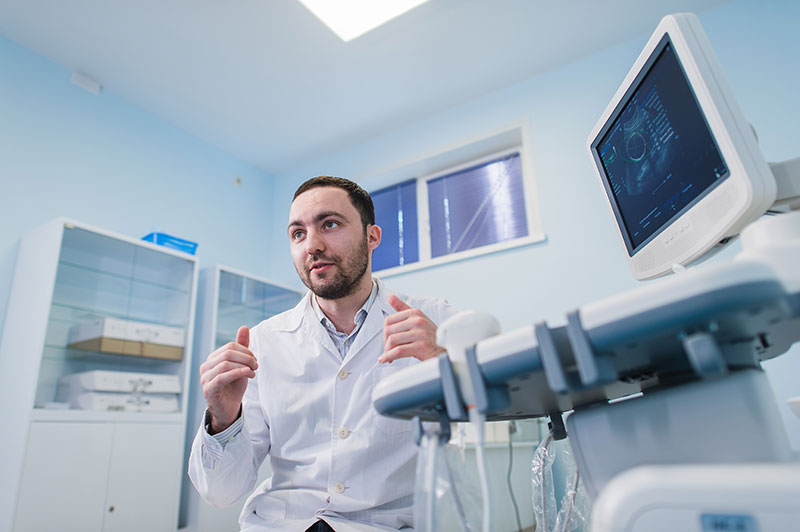It’s very common for physicians to think about expanding their practice to make it more profitable. However, the financial challenges that this entails can be significant. These may range from a reduction in fees by insurers to the need to buy or lease medical equipment, which requires a considerable investment and constant maintenance. Furthermore, medical billing and the use of correct coding to speed up payments are just some of the challenges that must be surmounted by physicians whose specializations require ongoing investment in the acquisition of new technologies as well as maintenance and upkeep.
We spoke with three physicians who have been practicing in Puerto Rico for the past ten years about measures they’ve taken to improve their office operation. Together we evaluated various aspects that might serve as guidelines for other colleagues who are just starting out or who are in a transition stage in the growth of their practice.
Attention To Quality Vs. Volume
“You have to be careful not to sacrifice quality for volume,” explained radiologist Pedro González Torres, whose offices are located at the International Marketing Center in Guaynabo. His specialization in breast imaging means that he needs to purchase equipment with a high level of image precision and quality, making it an investment which he simply can’t skimp on. The technology involved ranges from auto clave sterilizers, to digital imaging and ultrasound equipment, among others.
Levels Of Investment And Equipment Maintenance
“In my case, equipment prices can fluctuate on average between $250,000 and $350,000. This applies to equipment from such companies as Hologic, considered “state of the art,” or other units that offer 3D images. In some cases, they can be leased from local suppliers that market equipment from outside Puerto Rico,” González Torres said when commenting on the dilemmas involved between buying or leasing medical equipment. As for medical supply stores, the 41-year-old radiologist explained that “almost all the lines that develop this type of equipment, particularly those of MRI or magnetic resonance imagining, have a representative on the island,” mentioning Philips and GE as specific examples.
MRI and ultrasound equipment, the effectiveness of which is based on their level of precision, must be adapted to the environment where they will be operating. Their installation requires the joint efforts of an engineering team, the builder or developer of the facilities, and the doctor.
“These machines must always be on. They simply cannot be turned off. For this reason, their maintenance costs can fluctuate between $6,000 and $7,000 per month in addition to electric utility costs. The same thing happens with CT (computed tomography) equipment, which can run between $3,000 or $4,000 per month. The overall life of such equipment can extend up to 10 or 15 years, depending on the use and care that is involved,” said González Torres, whose training took place at the prestigious MD Anderson Hospital in the United States, which required frequent use of MRI equipment. To these high maintenance costs, the recruitment of specialized radiology technicians must be added, since they are the ones who will be handling the equipment on a daily basis. All of these factors must be considered when calculating operating costs.

Technology: A Tool For Improving Patient Care
In radiology, an incorrect diagnosis can lead to errors that could potentially result in the immediate loss of a patient’s life. “We must guarantee excellence,” is the slogan that González Torres applies to all phases of interaction with his patients. “Our patients are by appointment. Through electronic programs such as the Right Answer, we schedule appointments and send reports by email to both patients and their referring physicians.”
The Challenges Of Financing
For many medical subspecialists, the approval of financing for medical equipment represents a key factor in deciding whether to keep working at a hospital, as a member of a medical group, or to launch their own office. This was the case for Dr. Jan Kraemer, a 41-year-old anesthesiologist who specialized in pain management at the prestigious Johns Hopkins University. When he returned to Puerto Rico in 2010 from Boston after completing his residency, he faced the reality that some financial institutions required more than excellent credentials for obtaining the financing he needed. They demanded a greater number of assets.
“At the beginning, no bank would open its doors to me. They demanded that I have a broader practice to ensure a continuous flow of income, and I had just started in Puerto Rico,” said Kraemer, who wound up dividing his time between the island and Boston so as to ensure a minimum income that would enable him to grow. His ambition was to have his own offices with the equipment he needed in his specialization. Meanwhile, his first fluoroscope alone required an investment of $320,000. The property, the construction of the facilities, and the equipment all involved an initial investment of around $1 million. Ten months after beginning his practice in Puerto Rico, and after failed attempts with other financial institutions, he obtained financing through Oriental and was able to develop the Pain Management Center on Avenida Domenech in Hato Rey. “It was an act of faith on the part of Oriental, to whom I am eternally grateful. Today my entire banking relationship is with them,” he said.
“The useful life of my equipment is from 6 to 7 years, so I try to maintain a backup system for several of the units. From very early on in my practice, I realized that I not only needed a commercial loan, but also equipment financing, a payroll account, and of course a business account,” added Kraemer who uses local distributors for medical equipment ranging fromautoclave sterilizersto stretcher paper and syringes.

Investment In Diversification
For his colleague, gastroenterologist Roberto Vendrell—who opened his offices a decade ago on Calle Carazo in Guaynabo— told us that on the other hand that the investment in colonoscopy and endoscopy equipment can fluctuate between $100,000 and $200,000.
The new technology is bringing greater image definition,” says Vendrell. The growth of his practice can be seen through the incorporation of other health professionals, who have allowed him to expand the services he offers to patients in areas such as nutrition and psychology, which can directly impact the gastrointestinal system.
The experiences of these three doctors confirm how important the investment in the purchase, lease and maintenance of medical equipment can be both to achieve greater precision in diagnosis and to improve patient service. Similarly, the extension of the practice may lead to increases in the investment in the payroll.
Take The First Step Today To Expanding Your Practice
Technology in the field of health can make a substantial difference in the growth of practice and certainly, it is the most important investment of a medical office. For all phases of growth, there are products specially designed to meet those needs Check the attached check sheet and let us support you in the search for alternatives. Your office will not be the same.
Check out the list of requirements today and expand your business!
Legal
Subject to credit approval. Certain terms, conditions, and restrictions apply. Products offered by Oriental Bank, Member FDIC. Equal Credit Lender.




